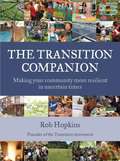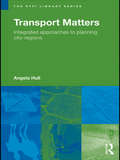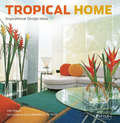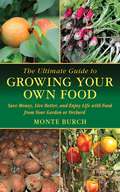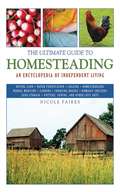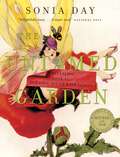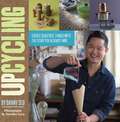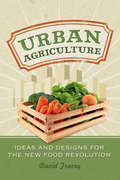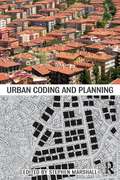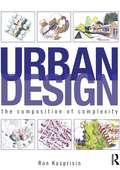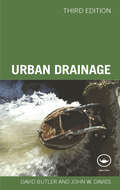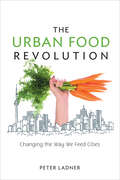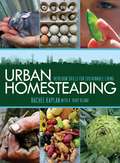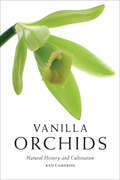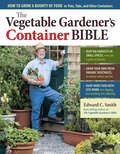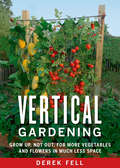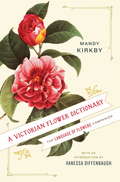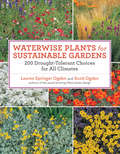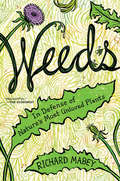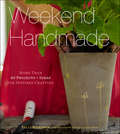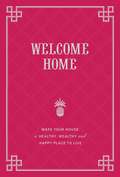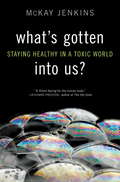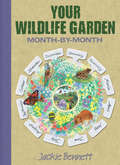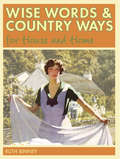- Table View
- List View
The Transition Companion
by Rob HopkinsIn this illustrated resource for general readers, Hopkins, founder of the UK'S Transition Movement, advocates a grassroots, community-led response to climate change and oil dependence. The first part of the book explains the rationale behind the need for a new paradigm for communities, reviewing the current and future consequences of oil dependence, climate change, and economic problems, and describes the transition movement's vision for revived communities. The book then describes real initiatives that work for lower energy use, ecological sustainability, and reliance on local economies. Hopkins gives advice on how to start and maintain a transition initiative, covering ingredients for success such as respectful communication, running effective meetings, forming a legal entity, starting local food initiatives, encouraging entrepreneurship, and using less energy. The book's color layout includes color photos and color-coded sections. Annotation ©2012 Book News, Inc. , Portland, OR (booknews. com)
Transport Matters: Integrated Approaches to Planning City-Regions (RTPI Library Series)
by Angela HullAddressing the principles of sustainability, spatial planning, integration, governance and accessibility of transport, this book focuses on the problem of providing efficient and low energy transport systems which serve the needs of everybody. It explores many of the new arguments, ideas and perceptions of mobility and accessibility in city-regions. Looking at evidence from Denmark, Sweden, The Netherlands, Germany and the UK, it considers the meaning of the key concepts of sustainable accessibility, the spatial planning model, and integrated territorial policies.
Tropical Home: Inspirational Design Ideas
by Kim Inglis Luca Invernizzi TettoniThis Asian interior design and architecture book showcases the best luxury homes and interior spaces of the Pacific region.Asia has emerged in the last couple of decades as the global leader in tropical villa design. <P><P>With innovative indoor/outdoor architecture engineered to facilitate relaxed, al fresco lifestyles, there are myriad solutions to suit every taste and pocket. Featuring hundreds of homes, garden estates, hotels, restaurants and more from India to Indochina, Indonesia to Sri Lanka, the design book gives a tantalizing glimpse of the latest trends for tropical wannabe decorators.Full-color photography of interiors and exteriors, garden features, pools and pavilions, as well as decorative details and fashion forward furniture, is accompanied by insightful text that traces past history and present trends, and predicts what is to come, design wise, in the future.
The Ugly Vegetables
by Grace LinTHE UGLY VEGETABLES springs forth with the bright and cheerful colors of blooming flowers and lumpy vegetables. Grace Lin's playful illustrations pour forth with abundant treasures. Complete with a guide to the Chinese pronunciation of the vegetables and the recipe for ugly vegetable soup! Try it . . . you'll love it, too!
The Ultimate Guide to Growing Your Own Food: Save Money, Live Better, and Enjoy Life with Food from Your Garden or Orchard (Ultimate Guides)
by Monte BurchGrowing your own food is a hot topic today because of the high cost of transporting food long distances, the heightened problem of diseases caused by commercially grown foods, and concerns of the overuse of chemicals in mass food production. Many people--from White House executives to inner-city kids--have recently discovered the benefits of homegrown vegetables and fruits. Community gardens, and even community canning centers, are increasingly popular and have turned roof-top gardening into a great and healthy food source. And on a smaller scale, some plants can even be grown in containers for the smallest backyard or patio. The possibilities for growing your own food are endless! The Ultimate Guide to Growing Your Own Food informs you how to grow all types of vegetables, fruits, and even grains on your own land or in any small space available to you and your family. Also included is information on specific health benefits, vitamins, and minerals for each food, as well as detailed instructions for fall and winter food growing. Learn how to grow for your family, harvest and store all types of home-grown produce, and find joy in eating foods planted with your own hands.
The Ultimate Guide to Homesteading: An Encyclopedia of Independent Living (The Ultimate Guides)
by Nicole FairesCan you make your own bread (sans bread machine)? Grow a garden all winter? What can you use instead of toilet paper? What if the power went out for a month? What if the grocery store closed? Can you make a solar oven? Store food without electricity? Raise a water buffalo? Make fine linen from stinging nettle? Make your own shampoo? Deliver a baby? Is it possible to be totally self-sufficient? This massive, full-color book answers all these questions and thousands more and includes checklists, diagrams, and instructions on how to buy a sheep. All of the information included meets these criteria: It is something that anyone can do, without special training. It can be done with relatively few supplies or with stuff you can make yourself. It has been tried and tested--either by the author, the military, doctors, or other homesteaders. The Ultimate Guide to Homesteading is not a storybook or a cookbook. It is a practical guide with nitty-gritty details on everything a homesteader can do, step-by-step with hundreds of color illustrations and pen and ink sketches. You can do it! This book can help.
The Untamed Garden: A Revealing Look at Our Love Affair with Plants
by Sonia DayWhich suggestive plant caused a queen to faint when it was presented to her at court? What was the original French name for the Great Maiden's Blush rose that had the Victorians blushing? Why are figs and pomegranates thought to be the real forbidden fruit that led Adam and Eve into temptation?In this delightful gift book, master gardener Sonia Day brings together delicious tidbits from myth, history, botany, and plant lore to reveal how plants have seduced our hearts, minds, and bodies throughout the ages. Organized in thematic chapters that loosely follow the arc of a love affair, the book journeys from "Innocence" (the notion of a virgin being "deflowered" originated with the belief that flowers were pure and sexless), through such stages as "Flirtation," "Seduction," "Lust," "Deception," and "Rapture." Scattered throughout are love potions, examples from the Victorian "language of flowers," and charming anecdotes, all told in Day's delightfully irreverent and conversational voice. Gorgeously designed and featuring full-colour photos and illustrations throughout, this is a sumptuous tribute to our enduring fascination with plants that is sure to seduce readers everywhere.
Upcycling: Create Beautiful Things with the Stuff You Already Have
by Danny SeoHave neglected items around your house? They can be the source for exciting craft possibilities! Turn your old leather belts into a cool doormat (or even a briefcase!); worn-out paperbacks into gorgeous bud vases; tennis balls into a quaint country swing; chopsticks into a handsome trivet, and many more.With full-color photos throughout to guide and inspire, Danny shows that it's easy to be crafty, and fun to be budget- and eco-conscious.
Urban Agriculture
by David TraceyUrban Agriculture is packed with ideas and designs for anyone interested in joining the new food revolution. First-time farmers and green thumbs alike will find advice on growing healthy, delicious, affordable food in urban settings. From condo balconies to community orchards, cities are coming alive with crops. Get growing!
Urban Coding and Planning: Urban Coding And Planning (Planning, History and Environment Series)
by Stephen MarshallUrban codes have a profound influence on urban form, affecting the design and placement of buildings, streets and public spaces. Historically, their use has helped create some of our best-loved urban environments, while recent advances in coding have been a growing focus of attention, particularly in Britain and North America. However, the full potential for the role of codes has yet to be realized. In Urban Coding and Planning, Stephen Marshall and his contributors investigate the nature and scope of coding; its purposes; the kinds of environments it creates; and, perhaps most importantly, its relationship to urban planning. By bringing together historical and ongoing traditions of coding from around the world – with chapters describing examples from the United Kingdom, France, India, China, Japan, Australia, South Africa, the United States and Latin America – this book provides lessons for today’s theory and practice of place-making.
Urban Design: The Composition of Complexity
by Ron KasprisinFor planning to be successful, design must mean more than simply blindly following the dictates of legislation and regulation – yet losing sight of the importance of the design process is all too often exactly what has happened. Ron Kasprisin has written a book for students of planning and urban design that reconnects the process of designing with outcomes on the ground, and puts thinking about design back at the heart of what planners do. The book identifies the elements and principles of composition and explores compositional order and structure as they relate to the meaning and functionality of cities. It discusses new directions and methods, outlines the importance of both buildings and the open spaces between them. Mixing accessible theory, practical examples and carefully designed exercises in composition from simple to complex settings, Urban Design is an essential textbook for classrooms and design studios across the full spectrum of planning and urban studies fields. Not only filled with illustrations and graphics of excellent projects, it gives students tools to enable them to sketch, draw, design and above all, to think.
Urban Drainage, Third Edition
by David Butler John DaviesUrban Drainage has been thoroughly revised and updated to reflect changes in the practice and priorities of urban drainage. New and expanded coverage includes: Sewer flooding The impact of climate change Flooding models The move towards sustainability Providing a descriptive overview of the issues involved as well as the engineering principles and analysis, it draws on real-world examples as well as models to support and demonstrate the key issues facing engineers dealing with drainage issues. It also deals with both the design of new drainage systems and the analysis and upgrading of existing infrastructure. This is a unique and essential textbook for students of water, environmental, and public health engineering as well as a valuable resource for practising engineers.
The Urban Food Revolution: Changing the Way We Feed Cities
by Peter LadnerOur reliance on industrial agriculture has resulted in a food supply riddled with hidden environmental, economic, and health care costs and beset by rising food prices. With only a handful of corporations responsible for the lion's share of the food on our supermarket shelves, we are incredibly vulnerable to supply chain disruption.The Urban Food Revolution provides a recipe for community food security based on leading innovations across North America. The author draws on his political and business experience to show that we have all the necessary ingredients to ensure that local, fresh sustainable food is affordable and widely available. He describes how cities are bringing food production home by:*Growing community through neighborhood gardening, cooking, and composting programs*Rebuilding local food processing, storage, and distribution systems*Investing in farmers markets and community supported agriculture*Reducing obesity through local fresh food initiatives in schools, colleges, and universities*Ending inner-city food desertsProducing food locally makes people healthier, alleviates poverty, creates jobs, and makes cities safer and more beautiful. The Urban Food Revolution is an essential resource for anyone who has lost confidence in the global industrial food system and wants practical advice on how to join the local food revolution.Peter Ladner has served two terms as a Vancouver City Councilor. With more than thirty-five years of journalistic experience, he is a frequent speaker on community issues and has a special interest in the intersection of food policy and city planning.
Urban Homesteading: Heirloom Skills for Sustainable Living
by K. Ruby Blume Rachel KaplanThe urban homesteading movement is spreading rapidly across the nation. Urban Homesteading is the perfect "back-to-the-land" guide for urbanites who want to reduce their impact on the environment. Full of practical information, as well as inspiring stories from people already living the urban homesteading life, this colorful guide is an approachable guide to learning to live more ecologically in the city. The book embraces the core concepts of localization (providing our basic needs close to where we live), self-reliance (re-learning that food comes from the ground, not the grocery store; learning to do things ourselves), and sustainability (giving back at least as much as we take). Readers will find concise how-to information that they can immediately set into practice, from making solar cookers to growing tomatoes in a barrel to raising chickens in small spaces to maintaining mental serenity in the fast-paced city environment. Full of beautiful full-color photographs and illustrations, and plenty of step-by-step instructions, this is a must-have handbook for city folk with a passion for the simple life.
Vanilla Orchids: Natural History and Cultivation
by Ken CameronWith more than 30,000 known species, orchids represent the largest family of plants. But only one genus has agricultural value—the Vanilla orchid. Leading orchid expert Ken Cameron covers the natural history of the world’s most popular flavor and fragrance and provides an introduction to the pollination, biology, structure, evolution, and diversity of Vanilla and related orchids. Vanilla Orchids also features methods for bean harvest, curing, and processing for enthusiasts who want to try it at home.
The Vegetable Gardener's Container Bible: How to Grow a Bounty of Food in Pots, Tubs, and Other Containers
by Edward C. SmithHarvest tomatoes on a patio, produce a pumpkin in a planter, and grow broccoli on a balcony! Best-selling author Ed Smith shows you everything you need to know to successfully create and care for an edible container garden, from choosing the right plants and selecting appropriate containers through controlling pests without chemicals and harvesting fresh vegetables. You&’ll discover that container gardening is an easy and fun way to enjoy summer&’s bounty in even the smallest of growing spaces.
Vertical Gardening: Grow Up, Not Out, for More Vegetables and Flowers in Much Less Space
by Derek FellThe biggest mistake gardeners make each season is starting out too big and then quickly realizing their large plot requires too much weeding, watering, and backbreaking labor. Vertical gardening guarantees a better outcome from the day the trowel hits the soil—by shrinking the amount of "floor" space needed and focusing on climbing plants that are less prone to insects, diseases, and animal pests.Notable author and gardener Derek Fell has tried and tested thousands of varieties of vegetables, flowers, and fruits and recommends the best plants for space-saving vertical gardening. His grow-up, grow-down system also shows which ground-level plants make good companions underneath and alongside climbing plants. Best of all, many of Fell's greatest climbers and mutually beneficial plants are available in seed packets in every local garden center.With a mix of DIY and commercially available string supports, trellises, pergolas, raised beds, skyscraper gardens, and topsy-turvy planters, the vertical garden system reduces work, increases yields, makes harvesting easier, and can be practiced in spaces as small as a container or a one-by-four-foot strip. Vertical Gardening features 100 color photos of the author's own vertical methods and showcases beautiful, troublefree perennials, shrubs, vegetables, annuals, and fruit perfect for this new, rewarding way to garden.
A Victorian Flower Dictionary
by Mandy Kirkby Vanessa Diffenbaugh"A flower is not a flower alone; a thousand thoughts invest it." Daffodils signal new beginnings, daisies innocence. Lilacs mean the first emotions of love, periwinkles tender recollection. Early Victorians used flowers as a way to express their feelings--love or grief, jealousy or devotion. Now, modern-day romantics are enjoying a resurgence of this bygone custom, and this book will share the historical, literary, and cultural significance of flowers with a whole new generation. With lavish illustrations, a dual dictionary of flora and meanings, and suggestions for creating expressive arrangements, this keepsake is the perfect compendium for everyone who has ever given or received a bouquet.From the Hardcover edition.
Waterwise Plants for Sustainable Gardens: 200 Drought-Tolerant Choices for all Climates
by Scott Ogden Lauren Springer Ogden“I can't imagine a designer or avid gardener who wouldn't want this on their bookshelf.” —Garden Design OnlineWaterwise Plants for Sustainable Gardens is a practical guide to the best 200 plants guaranteed to thrive in low-water gardens. Plant entries provide the common and botanical name, the regions where the plant is best adapted, growth and care information, and notes on pests and disease. This practical and inspiring guide includes a variety of plants, from trees to succulents, perennials to bulbs, all selected for their wide adaptability and ornamental value. Companion plants, creative design ideas, and full color photography make this guide a must-have resource for any sustainable gardener.
Weeds
by Richard MabeyThe true story-and true glories-of the plants we love to hate From dandelions to crabgrass, stinging nettles to poison ivy, weeds are familiar, pervasive, widely despised, and seemingly invincible. How did they come to be the villains of the natural world? And why can the same plant be considered beautiful in some places but be deemed a menace in others? In Weeds, renowned nature writer Richard Mabey embarks on an engaging journey with the verve and historical breadth of Michael Pollan. Weaving together the insights of botanists, gardeners, artists, and writers with his own travels and lifelong fascination, Mabey shows how these "botanical thugs" can destroy ecosystems but also can restore war zones and derelict cities; he reveals how weeds have been portrayed, from the "thorns and thistles" of Genesis to Shakespeare, Walden, and Invasion of the Body Snatchers; and he explains how kudzu overtook the American South, how poppies sprang up in First World War battlefields, and how "American weed" replaced the forests of Vietnam ravaged by Agent Orange. Hailed as "a profound and sympathetic meditation on weeds in relation to human beings" (Sunday Times), Weeds shows how useful these unloved plants can be, from serving as the first crops and medicines, to bur-dock inspiring the invention of Velcro, to cow parsley becoming the latest fashionable wedding adornment. Mabey argues that we have caused plants to become weeds through our reckless treatment of the earth, and he delivers a provocative defense of the plants we love to hate.
Weekend Handmade: More Than 40 Projects and Ideas for Inspired Crafting (Weekend Craft Ser.)
by Kelly Wilkinson&“Weekend Handmade provides instructions for quirky crafts that virtually anyone can do . . . Think hipster Martha Stewart&” (NPR Weekend Edition). In Weekend Handmade, author Kelly Wilkinson encourages readers to celebrate the joy of crafting, both for the satisfaction of making something by hand, and because the finished items serve as reminders of time taken to slow down and create—no matter the day of the week. The book is organized into three sections: &“Make&” offers projects to wear or decorate with; &“Grow&” presents projects inspired by gardens, fields, and farmer&’s markets; and &“Gather&” spotlights projects that enrich casual get-togethers. With clear, step-by-step instructions, every project in Weekend Handmade—from aprons, tablecloths, and marmalade to a memory box and a chandelier—can be completed in a few hours or over the course of a weekend. &“Think you can&’t make anything—or, more importantly, that you don&’t have the time to? Wilkinson&’s undowdy projects—luminarias, table decorations—are all designed to be completed in a couple of hours.&” —Entertainment Weekly
Welcome Home
by Rebecca DilibertoThis luxe little gift book holds the key to making a home harmonious. From the front door to the bedroom, every square inch of a dwelling can bring its occupants luck, and Welcome Home shows readers how. Compiled with vintage appeal, easy-to-peruse entries explain how to ward off negativity with dill, boost health with green accents in the kitchen, and more. This illustrated collection of superstitions and rituals gathered from across the globe and throughout the ages will help newlyweds, new home owners, feng shui fans, decorators, or those simply feeling down on their luck to conjure the health, wealth, and happiness they so richly deserve.
What's Gotten into Us? Staying Healthy in a Toxic World
by Mckay JenkinsDo you know what chemicals are in your shampoo? How about your cosmetics? Do you know what's in the plastic water bottles you drink from, or the weed killer in your garage, or your children's pajamas? If you're like most of us, the answer is probably no. But you also probably figured that most of these products were safe, and that someone--the manufacturers, the government--was looking out for you. The truth might surprise you.After experiencing a health scare of his own, journalist McKay Jenkins set out to discover the truth about toxic chemicals, our alarming levels of exposure, and our government's utter failure to regulate them effectively. The result of his two-year journey, What's Gotten into Us?, is a deep, remarkable, and empowering investigation into the threats--biological and environmental--that chemicals now present in our daily lives. It reveals how dangerous, and how common, toxins are in the most ordinary things, and in the most familiar of places: * Our water: Thanks to suburban sprawl and agricultural runoff, 97 percent of our nation's rivers and streams are now contaminated with everything from herbicides to pharmaceutical drugs. * Our bodies: High levels of hormone-disrupting chemicals from cosmetics, flame-retardants from clothing and furniture, even long-banned substances like DDT and lead, are consistently showing up in human blood samples. * Our homes: Many toxins lurk beneath our sinks and in our basements, of course, but did you know that they're also found in wall-to-wall carpeting, plywood, and fabric softeners? * Our yards: Pesticides, fungicides, even common fertilizers--there are enormous, unseen costs to our national obsession with green, weed-free lawns. What's Gotten Into Us? is much more than a wake-up call. It offers numerous practical ways for us to regain some control over our lives, to make our own personal worlds a little less toxic. Inside, you'll find ideas to help you make informed decisions about the products you buy, and to disentangle yourself from unhealthy products you don't need--so that you and your family can start living healthier lives now, and in the years to come. Because, as this book shows, what you don't know can hurt you.From the Hardcover edition.
Wildlife Garden month by month: Month-by-month (Month-by-Month)
by Jackie BennettThe Wildlife Garden; covers everything the gardener needs to know to cultivate and maintain a wildlife haven in their own garden, however small. There is a wealth of practical information and colour photographs on 'natural' gardening in a clear, easy-to-use, month-by-month format, allowing gardeners to find the advice they need instantly, when they need it. This title provides an introduction to the wild plants and creatures for each month, together with seasonal tips, tasks, checklists and detailed plant profiles. It offers easy-to-follow practical projects to create new habitats, such as making a wildlife pond, building a nest box, planning a herb bed, planting a summer meadow, and more.
Wise Words & Country Ways for House and Home
by Ruth BinneyContains generations of advice on simple ways to run an environmentally-friendly home, based around well-known, and not-so-well-known, sayings. Everyone is keen to reduce their carbon footprint, conserve resources, eat and live more healthily. Ruth Binney's fascinating collection of traditional wisdom shares how our forbears lived well within the resources available.
